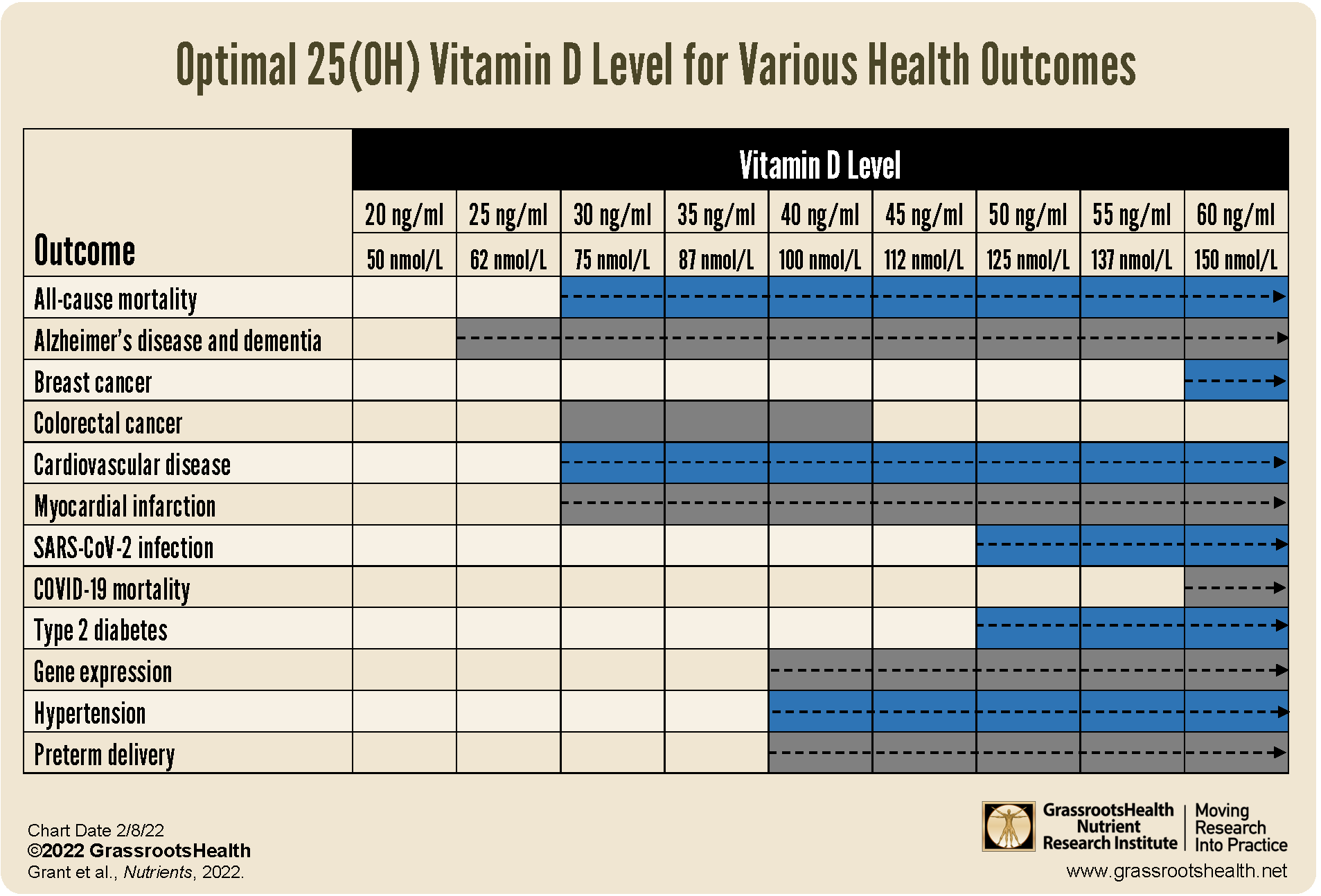Optimal Vitamin D Levels Differ for Specific Outcomes

A review of the strongest evidence available identifies differing optimal vitamin D levels needed to help prevent diseases known as major causes of death
Dr. William Grant is a GrassrootsHealth scientist panel member who has published many papers on vitamin D which been cited over 20,000 times, according to Scholar.Google.com. He is listed as a top author for both Vitamin D and Vitamin D Deficiency, and has received the “World Expert” title for sunlight.
A new review by Grant et al. has defined optimal vitamin D levels necessary to help prevent certain diseases known to be major causes of death, based on a review of the strongest evidence published to date. Diseases identified as those with the highest mortality rates included cardiovascular disease, hypertension, cancer, type 2 diabetes, Alzheimer’s Disease, and COVID-19.
Vitamin D Levels Required to Achieve Various Health Results
The findings, which are illustrated in the graph below, showed that optimal vitamin D levels needed for each outcome ranged from 25 ng/ml to 60 ng/ml – all of which were above the 20 ng/ml vitamin level recommended by the Institute of Medicine.
As the authors state, based on the evidence, “…given the multiple indications of significant health benefits from raising serum 25(OH)D concentrations above 30 or 40 ng/mL as well as the near absence of adverse effects, significant improvements in health at the individual and population levels could be achieved.” These results could be seen simply through achieving and maintaining optimal vitamin D levels!
Different Requirements for Different Systems and Outcomes
The significance of vitamin D on disease prognosis has been demonstrated by thousands of studies, on many different diseases or conditions, including breast cancer, prostate cancer and other cancers, thyroid disease, diabetes, and others. Each system within the body has its own requirement for vitamin D in order to function optimally. For example, while bone health may be optimized with a vitamin D level of at least 20 ng/ml, immune health may not be optimized until a vitamin D level of at least 50 ng/ml has been achieved, and the greatest reduction in breast cancer risk may not be seen until a vitamin D level of at least 60 ng/ml has been reached.
The Disease Incidence Prevention (DIP) Chart was one of the first graphics created by GrassrootsHealth, and it remains the most popular. It displays the reduction in risk of several diseases based on varying vitamin D levels. The DIP chart along with the Grant et al. study are reminders that
“…raising serum 25(OH)D concentrations to optimal concentrations will result in a significant reduction in preventable illness and death.”
Measuring vitamin D status and supplementing to reach optimal levels is a safe, simple, and effective way to improve health and help prevent disease – start by finding out your level today!
SmartTan.com news articles regularly report medical and scientific information to keep you abreast of current events related to UV light. This information is not intended to be used by any party to make unwarranted health claims to promote sunbed usage. Indoor tanning businesses are obligated to communicate a fair and balanced message to all clients about your products and services including the potential risks associated with indoor tanning. Contact your Smart Tan representative to find out more about what you can and can’t say in your tanning salon business.
© 2024 International Smart Tan Network. All rights reserved.

